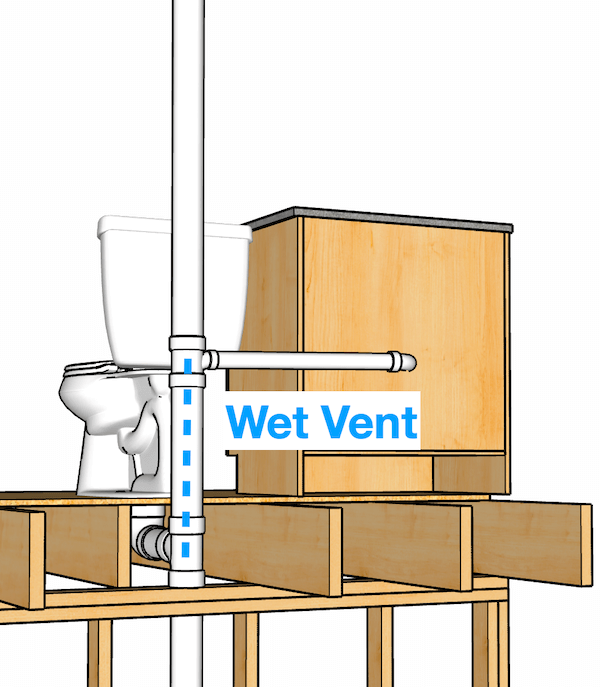The Significance of Adequate Ventilation in Your Home's Plumbing Systems
The Significance of Adequate Ventilation in Your Home's Plumbing Systems
Blog Article
Just how do you actually feel in relation to What Are Plumbing Vents and Why Are They Important??

Proper ventilation in pipes systems is typically forgotten, yet it is crucial for keeping the capability and safety of your home's plumbing. Ventilation aids control air pressure, avoid the buildup of hazardous gases, and make sure the effective removal of waste. In this overview, we will certainly discover the relevance of correct pipes ventilation, just how it functions, and the advantages it offers your plumbing system.
Understanding Air Flow in Pipes
Ventilation in pipes refers to the network of pipelines that permit air to flow through the drainage system. These vents serve multiple purposes, including regulating air pressure within the pipelines, avoiding sewage system gases from going into the home, and aiding in the smooth circulation of wastewater.
Exactly How Ventilation Functions in Plumbing Solutions
Air Pressure Law
Correct air flow keeps balanced atmospheric pressure within the pipes system. When water flows with pipelines, it displaces air. Without sufficient ventilation, this displacement can develop negative pressure, causing slow down drains or siphoning of water from catches, which can create unpleasant odors to seep into the home.
Protecting Against Sewage System Gas Accumulation
Among the most crucial functions of plumbing vents is to avoid drain gases, such as methane and hydrogen sulfide, from accumulating within the home. These gases can posture major health dangers and are extremely flammable. Vent pipelines allow these gases to escape securely outside.
Aiding in Waste Elimination
Ventilation assists in the efficient removal of wastewater by protecting against airlocks in the water drainage system. When air can flow easily with the vents, it enables water and waste to move efficiently via the pipes, lowering the danger of blockages and backups.
Types of Pipes Vents
Key Heap Vent
The major stack vent, additionally known as the vent pile, is the primary air vent in a plumbing system. It expands from the major drainpipe align through the roofing system, allowing gases to escape and fresh air to get in the system.
Branch Vent
Branch vents attach to the main pile air vent and offer individual fixtures, such as sinks, commodes, and showers. These vents make certain that each component has ample air flow to work properly.
Air Admission Shutoff (AAV).
An Air Admission Valve (AAV) is a one-way shutoff that enables air to get in the pipes system without the demand for a traditional air vent pipe expanding through the roofing system. AAVs are generally utilized in renovations or locations where setting up a conventional vent is unwise.
Indications of Poor Air Flow in Pipes.
Slow Draining Fixtures.
If your sinks, tubs, or commodes are draining pipes gradually, maybe an indicator of poor air flow. Inadequate air flow can create a vacuum impact, making it difficult for water to drain pipes properly.
Gurgling Appears.
Gurgling sounds originating from drains are usually a result of air being drawn with water catches because of adverse pressure in the pipes. This is a clear indicator of insufficient ventilation.
Unpleasant Odors.
Sewer smells inside your home are a warning that your pipes system is not effectively aerated. This can imply that sewer gases are not being sufficiently aired vent outside, bring about potentially dangerous problems.
Usual Ventilation Mistakes.
Insufficient Vent Sizing.
Making use of small air vent pipelines can bring about inadequate air circulation and pressure inequalities in the system. It's vital to utilize vents that meet the particular requirements of your pipes system.
Improper Vent Placement.
Putting vents as well far from the components they offer can lower their performance. Correct placement ensures that air can move openly and successfully with the system.
Disregarding Code Demands.
Building codes give particular standards for plumbing air flow. Disregarding these codes can result in a system that fails to work appropriately and may result in pricey repair work or carcinogen.
Benefits of Appropriate Air Flow.
Boosted System Efficiency.
Effectively ventilated plumbing systems operate much more successfully, with less clogs, faster draining, and less pressure on the pipelines. This performance prolongs the lifespan of the pipes system.
Improved Air Top Quality.
By stopping drain gases from entering your home, appropriate ventilation adds to far better interior air quality, making your living environment healthier and more comfy.
Stopping Water Damage.
Adequate ventilation aids avoid water from being siphoned out of traps, which can cause drain gases getting in the home and triggering water damage gradually.
Actions to Ensure Correct Ventilation.
Consulting Pipes Codes.
Always seek advice from neighborhood pipes codes when designing or changing your pipes system. These codes provide the required standards for appropriate airing vent and ensure your system fulfills security standards.
Routine Evaluation and Maintenance.
Routine inspections can aid determine prospective ventilation problems prior to they end up being major problems. Maintenance tasks, such as cleansing air vent pipes and checking for blockages, are crucial for keeping the system in good working order.
Expert Setup.
For brand-new installments or major modifications, it's wise to work with an expert plumbing professional. They have the expertise to ensure the air flow system is correctly designed and installed according to code.
Conclusion.
Appropriate ventilation is an essential element of any kind of pipes system, making certain that it works efficiently and securely. By recognizing the importance of air flow, acknowledging the indicators of poor ventilation, and taking steps to preserve your system, you can stop expensive issues and secure your home's air top quality.
4 Things You Should Know About Your Plumbing Vents
What Plumbing Vents Are
Also called a vent stack, a plumbing vent is a vertical pipe attached to your drain line that runs through your roof. The plumbing vent pipe, or plumbing air vent, removes gas and odors from your plumbing system and allows fresh air to enter the pipes, helping the water to flow out of the drain pipes.
What Plumbing Vents Do
Plumbing vents have two basic functions. One of which is to allow unpleasant smelling wastewater and sewer gasses to escape your plumbing system instead of entering your home. Plumbing vent pipes are typically located on roofs, away from windows, to ensure the fumes exit the home completely.
The other function of the plumbing vent is to move fresh air into your plumbing system. This helps move water through every plumbing fixture in your house, like toilets and sink drains. Think of the way in which you need to let a little air into the bottle as you pour soda in order to make the drink flow smoothly.
Different Types of Plumbing Vents
True vent: This is the most common vent option. In simplest terms, a true vent is a vertical pipe attached to your drain line that exits through the roof. They often function as the main vent that other fixtures can connect to. Re-vent pipe or auxiliary vent: Attached to the drain line near specific plumbing fixtures, re-vent pipes run up and over to connect to the main vent. Common vent: Two plumbing fixtures installed on opposite sides of a wall are typically tied into the vent stack using something known as a sanitary cross. Wet vent: This venting option operates as a drain pipe and a vent at the same time. Wet vent drainage systems drain water from one fixture while venting the air from another. Although they’ve been used for over 100 years, wet vent systems have only recently been added to the plumbing code in many areas. If you’re planning on installing one in a bathroom remodel, make sure you check your local code prior to construction. Loop vent: For free-standing fixtures like kitchen island sinks, loop vents are ideal. These vent pipes run under the floor, rise from the P-trap, and create a loop inside the cabinet sink. Air admittance valve: An AAV is a one-way mechanical valve typically installed at the site of the plumbing fixture. AAVs allow venting to occur without having to tie into a larger venting system. They’re ideal for venting fixtures where you aren’t able to easily connect to an existing vent system. Common Plumbing Vent Issues
Although vent pipes typically don’t have water flowing through them, they’re still subject to many typical plumbing issues. For example, clogs are one of the most common problems associated with sewer vent pipes. If your vent pipe gets clogged, all of your plumbing fixtures tied into the vent stack will be affected.
A sink with a slow drain that bubbles and gurgles or a strong sewage smell around your toilet are both indicators that your toilet vent pipe is clogged. Because most vent pipes exit through the roof, old leaves, twigs or even a bird’s nest could be clogging the pipe.
Clogs in your vent pipe system cause a buildup of negative pressure, meaning that water won’t be able to flow out of your home very well. It’s similar to putting your finger over the opening of a straw to trap water inside. When you remove your finger, the water is able to flow out of the straw.
If you suspect you have any blockage in your vent, make sure you have a professional come examine the situation. Left unchecked, a blocked air vent can lead to other costly repairs, like leaks and sediment buildup.
Under Pressure
Pipe vents are essential aspects of a home’s plumbing system. Owning a home means learning about all sorts of things you never put much thought into before. But by understanding as much as you can about the important systems of your home, you can keep those budgets intact and those anxiety levels low.
https://www.homeserve.com/en-us/blog/home-improvement/plumbing-vents/

Hopefully you liked our post about What Is A Plumbing Vent & How Do They Work?. Thanks a lot for finding the time to browse our content. You should take the time to promote this blog posting if you enjoyed it. Kudos for your time. Revisit us soon.
Further Details Report this page